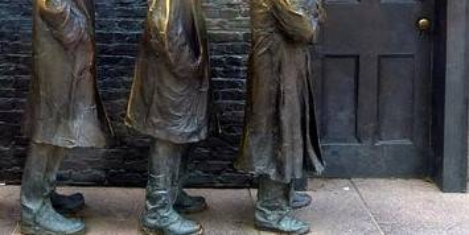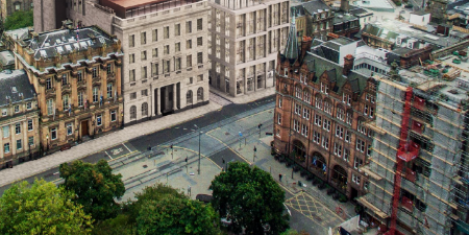February 28, 2018
The very idea of good work in a gig economy remains a distant ideal
 Don Lane’s employment contract for his work as a courier described him as an “independent contractor”. This meant he was neither an “employee” nor a “worker”, so not entitled to legal rights such as protection against dismissal, paid holidays, or statutory sick pay. The 53-year-old also suffered from diabetes, and had previously been fined £150 by the delivery firm he worked for for missing work to attend a hospital appointment. He died in January 2018 after working through the Christmas season despite his illness. The following month, the British government revealed its response to an earlier official report on modern working practices and the gig economy. That report, by Matthew Taylor, contained 53 recommendations to improve the working environment, or achieve the report’s title, namely ‘good work’.
Don Lane’s employment contract for his work as a courier described him as an “independent contractor”. This meant he was neither an “employee” nor a “worker”, so not entitled to legal rights such as protection against dismissal, paid holidays, or statutory sick pay. The 53-year-old also suffered from diabetes, and had previously been fined £150 by the delivery firm he worked for for missing work to attend a hospital appointment. He died in January 2018 after working through the Christmas season despite his illness. The following month, the British government revealed its response to an earlier official report on modern working practices and the gig economy. That report, by Matthew Taylor, contained 53 recommendations to improve the working environment, or achieve the report’s title, namely ‘good work’.







 In a workplace dominated by insecurity, gig work and intelligent machines we need to improve our understanding of their potential impact on health, safety and wellbeing claims a new report.
In a workplace dominated by insecurity, gig work and intelligent machines we need to improve our understanding of their potential impact on health, safety and wellbeing claims a new report. 


 Demand for office space in Scotland’s three largest cities pushed overall take-up beyond 2m sq ft last year, aided by a solid final quarter of occupational deals in Aberdeen and Glasgow, and an all-time record year for Edinburgh. Scotland’s offices market in 2017 reach ed2.4 million sq ft, 14 percent above the 10 year average, according to the latest Scottish Office Spotlight from Savills. In Edinburgh (city centre and wider market) office take-up amounted to a record 1.1 million sq ft boosted by the ongoing growth of tech in the city. According to data from Stack Overflow, the Scottish capital saw a 19 percent increase in data scientists employed in the city centre over the course of 2017. Activity places further pressure on supply with only 220,000 sq ft of Grade A now available which Savills suggests will push top rents to £34 per sq ft in 2018. Keith Dobson, director in the business space agency team at Savills in Edinburgh, says: “The soon to be completed 40,000 sq ft office scheme at 2 Semple Street will ease pent up demand come Q2 2018, whilst The Mint Building and Capital Square will complete in 2019 and 2020 respectively.”
Demand for office space in Scotland’s three largest cities pushed overall take-up beyond 2m sq ft last year, aided by a solid final quarter of occupational deals in Aberdeen and Glasgow, and an all-time record year for Edinburgh. Scotland’s offices market in 2017 reach ed2.4 million sq ft, 14 percent above the 10 year average, according to the latest Scottish Office Spotlight from Savills. In Edinburgh (city centre and wider market) office take-up amounted to a record 1.1 million sq ft boosted by the ongoing growth of tech in the city. According to data from Stack Overflow, the Scottish capital saw a 19 percent increase in data scientists employed in the city centre over the course of 2017. Activity places further pressure on supply with only 220,000 sq ft of Grade A now available which Savills suggests will push top rents to £34 per sq ft in 2018. Keith Dobson, director in the business space agency team at Savills in Edinburgh, says: “The soon to be completed 40,000 sq ft office scheme at 2 Semple Street will ease pent up demand come Q2 2018, whilst The Mint Building and Capital Square will complete in 2019 and 2020 respectively.”














March 2, 2018
Employment law is out of step with flexible work and the changing workplace
by Leon Deakin • Comment, Flexible working, Legal news, Workplace
(more…)